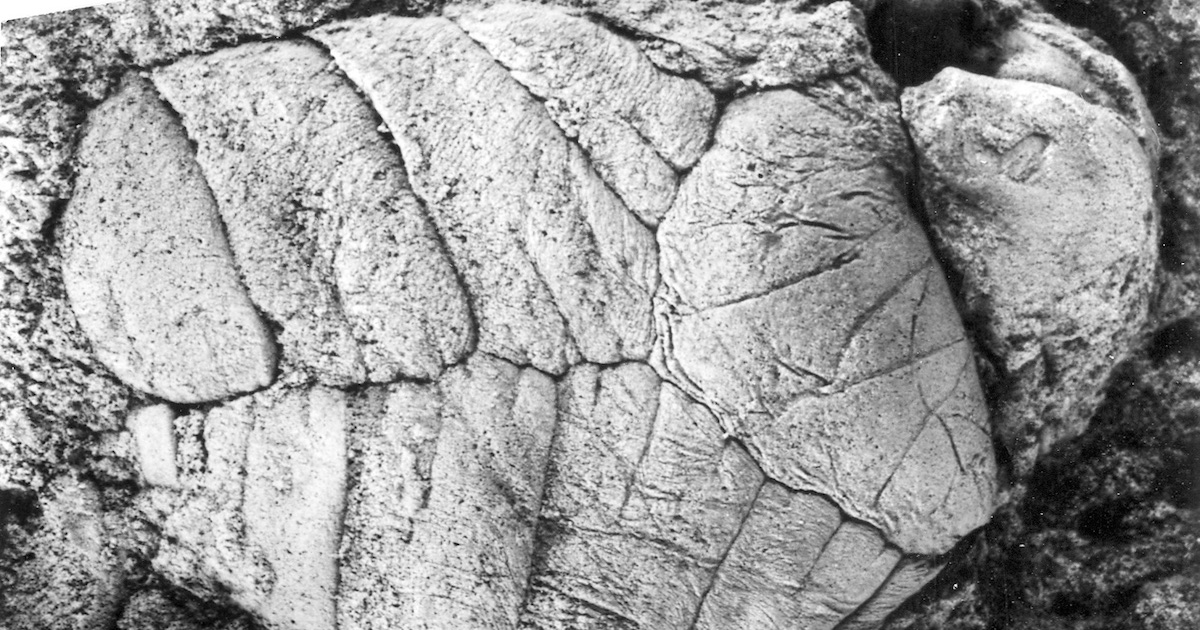 Evolution
Evolution
Examining Potential Other Trilobozoans

Editor’s note: We are delighted to present here Part 4 of “A Precambrian House of Cards,” a series by Dr. Bechly. Find the full series at this link. An extensive References section will follow at the end of the series.
Wang et al. (2008) described unnamed discoidal fossils with tri-radial symmetry preserved as carbonaceous compression fossils from the Doushantuo Formation in South China, which they attributed to Trilobozoa similar to Anfesta and Albumares.
Rugoconites was described by Glaessner & Wade (1966) as a conical disc-shaped fossil from the Ediacaran of Australia. Initially it was considered as a medusoid (Wade 1972), but later often considered as a putative Precambrian sponge (e.g., Seilacher 1999). After its poriferan relationship had been dismissed (see Bechly 2020c), most specialists nowadays rather consider Rugoconites as member of Trilobozoa (Ivantsov & Fedonkin 2002, Xiao & Laflamme 2009, Hall et al. 2018), even though it lacks clear tri-radial symmetry.
Very Different Morphology
Triforillonia was described by Gehling et al. (2000), who mentioned the threefold symmetry as similar to trilobozoans, but also emphasized the very different morphology. Grazhdankin (2014) mentioned that Triforillonia is always preserved as positive hyporeliefs, while typical trilobozoans are preserved as negative hyporeliefs.
Fedonkin & Ivantsov (2007) redescribed the enigmatic Ventogyrus from the Vendian of northern Russia as a siphonophore-like coelenterate with tri-radial symmetry, and therefore considered it as another member of Trilobozoa.
In their revision of Ediacaran tri-radial body plans, Hall et al. (2018) questioned the previously suggested relationship of the genera Pomoria, Triforillonia, and Ventogyrus with trilobozoans. Hall et al. also excluded the strange Coronacollina from the otherwise monophyletic group Trilobozoa, because in spite of a possible threefold symmetry, it looks very different and has skeletonized elements (spicules), which actually represent the oldest skeletons in the fossil record (Clites et al. 2012).
The extinct Anabaritidae (= Angustiochreidae) are small shelly index fossils from the Uppermost Ediacaran and Lowermost Cambrian with tri-radial symmetry and a conical tube-like shape, which are generally believed to be cnidarians (Kouchinsky et al. 1999, 2009). Some scientists suggested that they could be late surviving members of Trilobozoa (Fedonkin 1981, 1985a, 1985c, 1986, 1990, 1992, Val’kov 1987, Fedonkin & Cope 1985, Schopf & Klein 1992, Kiessling 2003, and Grazhdankin 2014). Kouchinsky et al. (2009) nevertheless cautioned that tri-radial symmetry could easily be due to convergent evolution and therefore preferred to consider anabaritids as incertae sedis. McMenamin (1998: 22-24 and 86-87) had already warned that “The similarities are interesting, but whether they point to anything more than a superficially shared triradial character is not known.” McMenamin instead highlighted that the fractal pattern of striae on the trilobozoan lobes is very similar to the Ediacaran frond-like genus Gehlingia (McMenamin 2016: 9, 61). He therefore concurred with the Vendobionta-hypothesis of my former teacher Adolf Seilacher, who proposed that all the Ediacaran organisms are related and distinct from other kingdoms of life, which happens to be my preferred view as well.
A “Missing Link”?
Finally, it was suggested that the tetra-radial symmetry of the extinct Conulariida, which are generally considered to be scyphozoan cnidarians (Van Iten et al. 2006), was derived via the hexa-radial stem conulariid Vendoconularia triradiata as a “missing link” from a common tri-radial body plan with Trilobozoa (Ivantsov & Fedonkin 2002, Fedonkin 2003, Grazhdankin 2014, Serezhnikova 2014).
Even though some scientists speculated that other disc-shaped Ediacaran fossils, such as the alleged stem ctenophoran Eoandromeda (Tang et al. 2011, Erwin et al. 2011, Giribet & Edgecombe 2020) and the alleged stem echinoderm Arkarua(Seilacher 1999, Seilacher et al. 2003), might also be related to trilobozoans, such a relationship has been rejected by other scientists because of the very different symmetry and morphology (e.g., Gehling 1987).
Last but not least, there is this gem: In 1986 strange mushroom-shaped deep-sea animals were collected offshore South Australia. Their relationship was initially very enigmatic, and they were considered as a putative new phylum related to the Ediacaran Trilobozoa by Just et al. (2014), who therefore named the new animal species Dendrogramma enigmatica. However, just two years after this sensational discovery it was unraveled that they are just fragments (probably bracts) of benthic colonial cnidarians of the siphonophoran family Rhodaliidae (O’Hara et al. 2016). No new phylum and no trilobozoan relatives. If even living animals with all their detailed data can so greatly confuse scientists, how much more so the fragmentary information from poorly preserved fossils from half-a-billion-years ago. Unfortunately, many studies lack some adequate caution and prudence, which may be reinforced by the dominating “publish or perish” paradigm.
Tomorrow, “Uncertain Affinities of Trilobozoa.”
